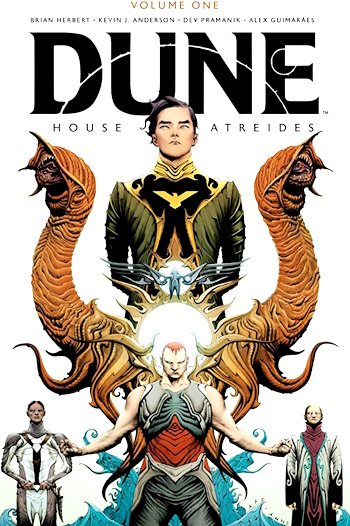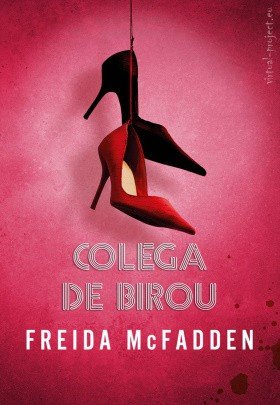Apple first homed in on a company that had been started by Jean-Louis Gassée, called Be. Gassée began negotiating the sale of Be to Apple, but in August 1996 he overplayed his hand at a meeting with Amelio in Hawaii. He said he wanted to bring his fifty-person team to Apple, and he asked for 15% of the company, worth about $500 million. Amelio was stunned. Apple calculated that Be was worth about $50 million. After a few offers and counteroffers, Gassée refused to budge from demanding at least $275 million. He thought that Apple had no alternatives. It got back to Amelio that Gassée said, “I’ve got them by the balls, and I’m going to squeeze until it hurts.” This did not please Amelio.
Apple’s chief technology officer, Ellen Hancock, argued for going with Sun’s UNIX-based Solaris operating system, even though it did not yet have a friendly user interface. Amelio began to favor using, of all things, Microsoft’s Windows NT, which he felt could be rejiggered on the surface to look and feel just like a Mac while being compatible with the wide range of software available to Windows users. Bill Gates, eager to make a deal, began personally calling Amelio.
There was, of course, one other option. Two years earlier Macworld magazine columnist (and former Apple software evangelist) Guy Kawasaki had published a parody press release joking that Apple was buying NeXT and making Jobs its CEO. In the spoof
Steve Jobs by Walter Isaacson 394
Mike Markkula asked Jobs, “Do you want to spend the rest of your life selling UNIX with a sugarcoating, or change the world?” Jobs responded, “Because I’m now a father, I needed a steadier source of income.” The release noted that “because of his experience at Next, he is expected to bring a newfound sense of humility back to Apple.” It also quoted Bill Gates as saying there would now be more innovations from Jobs that Microsoft could copy. Everything in the press release was meant as a joke, of course. But reality has an odd habit of catching up with satire.
Slouching toward Cupertino
“Does anyone know Steve well enough to call him on this?” Amelio asked his staff. Because his encounter with Jobs two years earlier had ended badly, Amelio didn’t want to make the call himself. But as it turned out, he didn’t need to. Apple was already getting incoming pings from NeXT. A midlevel product marketer at NeXT, Garrett Rice, had simply picked up the phone and, without consulting Jobs, called Ellen Hancock to see if she might be interested in taking a look at its software.
She sent someone to meet with him.
By Thanksgiving of 1996 the two companies had begun midlevel talks, and Jobs picked up the phone to call Amelio directly. “I’m on my way to Japan, but I’ll be back in a week and I’d like to see you as soon as I return,” he said. “Don’t make any decision until we can get together.” Amelio, despite his earlier experience with Jobs, was thrilled to hear from him and entranced by the possibility of working with him. “For me, the phone call with Steve was like inhaling the flavors of a great bottle of vintage wine,” he recalled. He gave his assurance he would make no deal with Be or anyone else before they got together.
For Jobs, the contest against Be was both professional and personal. NeXT was failing, and the
Steve Jobs by Walter Isaacson 395
prospect of being bought by Apple was a tantalizing lifeline. In addition, Jobs held grudges, sometimes passionately, and Gassée was near the top of his list, despite the fact that they had seemed to reconcile when Jobs was at NeXT. “Gassée is one of the few people in my life I would say is truly horrible,” Jobs later insisted, unfairly. “He knifed me in the back in 1985.” Sculley, to his credit, had at least been gentlemanly enough to knife Jobs in the front.
On December 2, 1996, Steve Jobs set foot on Apple’s Cupertino campus for the first time since his ouster eleven years earlier. In the executive conference room, he met Amelio and Hancock to make the pitch for NeXT. Once again he was scribbling on the whiteboard there, this time giving his lecture about the four waves of computer systems that had culminated, at least in his telling, with the launch of NeXT. He was at his most seductive, despite the fact that he was speaking to two people he didn’t respect. He was particularly adroit at feigning modesty. “It’s probably a totally crazy idea,” he said, but if they found it appealing, “I’ll structure any kind of deal you want—license the software, sell you the company, whatever.” He was, in fact, eager to sell everything, and he pushed that approach. “When you take a close look, you’ll decide you want more than my software,” he told them. “You’ll want to buy the whole company and take all the people.”
A few weeks later Jobs and his family went to Hawaii for Christmas vacation. Larry Ellison was also there, as he had been the year before. “You know, Larry, I think I’ve found a way for me to get back into Apple and get control of it without you having to buy it,”
Jobs said as they walked along the shore. Ellison recalled, “He explained his strategy, which was getting Apple to buy NeXT, then he would go on the board and be one step away from being CEO.” Ellison thought that
Steve Jobs by Walter Isaacson 396
Jobs was missing a key point. “But Steve, there’s one thing I don’t understand,” he said. “If we don’t buy the company, how can we make any money?” It was a reminder of how different their desires were. Jobs put his hand on Ellison’s left shoulder, pulled him so close that their noses almost touched, and said, “Larry, this is why it’s really important that I’m your friend. You don’t need any more money.”
Ellison recalled that his own answer was almost a whine: “Well, I may not need the money, but why should some fund manager at Fidelity get the money? Why should someone else get it? Why shouldn’t it be us?”
“I think if I went back to Apple, and I didn’t own any of Apple, and you didn’t own any of Apple, I’d have the moral high ground,” Jobs replied.
“Steve, that’s really expensive real estate, this moral high ground,” said Ellison. “Look, Steve, you’re my best friend, and Apple is your company. I’ll do whatever you want.” Although Jobs later said that he was not plotting to take over Apple at the time, Ellison thought it was inevitable. “Anyone who spent more than a half hour with Amelio would realize that he couldn’t do anything but self-destruct,” he later said.
The big bakeoff between NeXT and Be was held at the Garden Court Hotel in Palo Alto on December 10, in front of Amelio, Hancock, and six other Apple executives. NeXT went first, with Avie Tevanian demonstrating the software while Jobs displayed his hypnotizing salesmanship. They showed how the software could play four video clips on the screen at once, create multimedia, and link to the Internet.
“Steve’s sales pitch on the NeXT operating system was dazzling,” according to Amelio. “He praised the virtues and strengths as though he were describing a performance of Olivier as Macbeth.”
Gassée came in afterward, but he acted as if he
Steve Jobs by Walter Isaacson 397
had the deal in his hand. He provided no new presentation. He simply said that the Apple team knew the capabilities of the Be OS and asked if they had any further questions. It was a short session. While Gassée was presenting, Jobs and Tevanian walked the streets of Palo Alto. After a while they bumped into one of the Apple executives who had been at the meetings.
“You’re going to win this,” he told them.
Tevanian later said that this was no surprise: “We had better technology, we had a solution that was complete, and we had Steve.” Amelio knew that bringing Jobs back into the fold would be a double-edged sword, but the same was true of bringing Gassée back. Larry Tesler, one of the Macintosh veterans from the old days, recommended to Amelio that he choose NeXT, but added, “Whatever company you choose, you’ll get someone who will take your job away, Steve or Jean-Louis.”
Amelio opted for Jobs. He called Jobs to say that he planned to propose to the Apple board that he be authorized to negotiate a purchase of NeXT. Would he like to be at the meeting? Jobs said he would. When he walked in, there was an emotional moment when he saw Mike Markkula. They had not spoken since Markkula, once his mentor and father figure, had sided with Sculley there back in 1985. Jobs walked over and shook his hand.
Jobs invited Amelio to come to his house in Palo Alto so they could negotiate in a friendly setting. When Amelio arrived in his classic 1973 Mercedes, Jobs was impressed; he liked the car. In the kitchen, which had finally been renovated, Jobs put a kettle on for tea, and then they sat at the wooden table in front of the open-hearth pizza oven. The financial part of the negotiations went smoothly; Jobs was eager not to make Gassée’s mistake of overreaching. He suggested that Apple pay
Steve Jobs by Walter Isaacson 398
$12 a share for NeXT. That would amount to about $500 million. Amelio said that was too high. He countered with $10 a share, or just over $400 million.
Unlike Be, NeXT had an actual product, real revenues, and a great team, but Jobs was nevertheless pleasantly surprised at that counteroffer. He accepted immediately.
One sticking point was that Jobs wanted his payout to be in cash. Amelio insisted that he needed to
“have skin in the game” and take the payout in stock that he would agree to hold for at least a year. Jobs resisted. Finally, they compromised: Jobs would take $120 million in cash and $37 million in stock, and he pledged to hold the stock for at least six months.
As usual Jobs wanted to have some of their conversation while taking a walk. While they ambled around Palo Alto, he made a pitch to be put on Apple’s board. Amelio tried to deflect it, saying there was too much history to do something like that too quickly. “Gil, that really hurts,” Jobs said. “This was my company. I’ve been left out since that horrible day with Sculley.”
Amelio said he understood, but he was not sure what the board would want. When he was about to begin his negotiations with Jobs, he had made a mental note to
“move ahead with logic as my drill sergeant” and
“sidestep the charisma.” But during the walk he, like so many others, was caught in Jobs’s force field. “I was hooked in by Steve’s energy and enthusiasm,” he recalled.
After circling the long blocks a couple of times, they returned to the house just as Laurene and the kids were arriving home. They all celebrated the easy negotiations, then Amelio rode off in his Mercedes. “He made me feel like a lifelong friend,” Amelio recalled.
Jobs indeed had a way of doing that. Later, after Jobs had engineered his ouster, Amelio would look back on Jobs’s friendliness that day and note wistfully, “As I

























